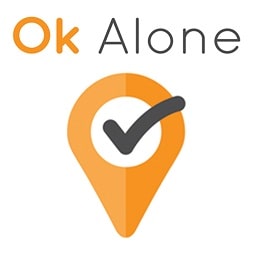Health and safety is a term that’s been around for a long time. The general topic covers a wide range of activities from working with hazardous materials to agriculture. Health and safety legislation requires employers, amongst other things, to make sure all reasonable risks in the workplace have been reviewed and mitigated as much as possible. One situation that has special risks associate with it is working alone.
Health and safety issues to consider for working alone
- Ensure to appoint one or more monitors for each worker. It seems obvious, but when someone is working alone, they need a competent person who can take action in an emergency. This person does not have to be on–site, but they do need to be able to call on local resources to resolve the situation quickly
- Set check-in frequency to match risk. Your risk assessment gives you an overall rating for your lone worker’s activities. For simplicity, let’s use low, medium and high as the rankings. In this context, you could decide low risk people check-in every 4 hours, medium risk every 2 hours and high risk every hour.
- Have a clear health and safety policy. The policy doesn’t have to long or complicated, but it should include a statement of intent, who is responsible for what actions, and identify the various issues/remedial actions identified by your hazard assessment.
- Consult with staff. The people doing the work are often best placed to know where potential problems can occur. In many countries, getting worker agreement is a mandatory requirement of your overall work alone safety procedures. Consultation also shows commitment to a strong health and safety culture, which is a very powerful tool.
- Stress and mental health. With lone workers not always in view, it’s especially important to pay attention to signs of stress or mental health issues. One of the most common indicators of something being wrong is an unusually high sick absence rate.
- Drugs and alcohol. Alcohol has long been banned from use in the workplace, but in Canada at least, there is the risk from the legalisation of marijuana. A potential sign that drugs and alcohol may be being used at work are an increase in minor accidents. Pay particularly close attention to the accident reports of your lone workers.
- Promoting healthy life choices. Given points 5 and 6, promoting healthy living choices is a low cost way to improve the health and safety of those working alone. Fit, healthy and alert employees will perform better, show up for work regularly and have fewer accidents.
- Identify part time lone workers. In many cases, people end up working alone without realising it. For example, have you ever stayed late to complete that project and found yourself locking up for the evening. Under most rules, this would qualify you as working alone. Situations like this should be identified in your risk assessment and picked up in your safety policy.
Looking for help with your risk assessment? Why not download our free risk assessment free guide?

The Ok Alone team writes informative articles about lone working. Through our articles, we aim to educate readers on the benefits and best practices of using our lone worker app, and how Ok Alone can help mitigate risks and enhance communication between workers and monitors. Learn about other areas including legislation, risk management, and legal compliance plus lone worker features such as man down, high-risk check ins and location monitoring.

